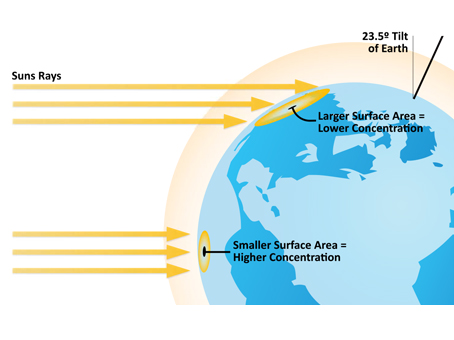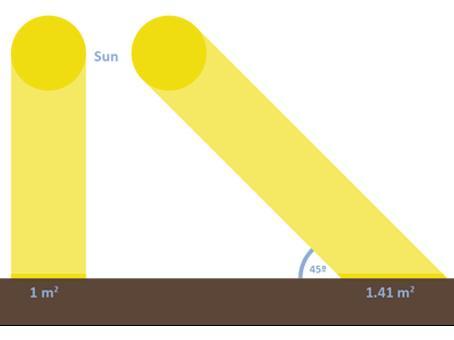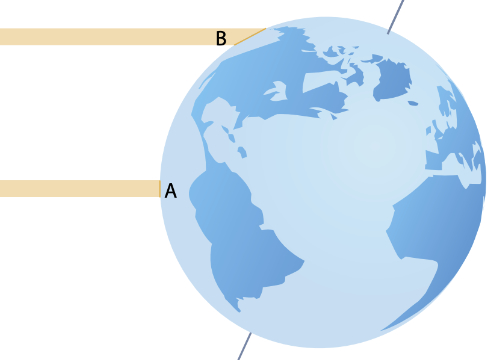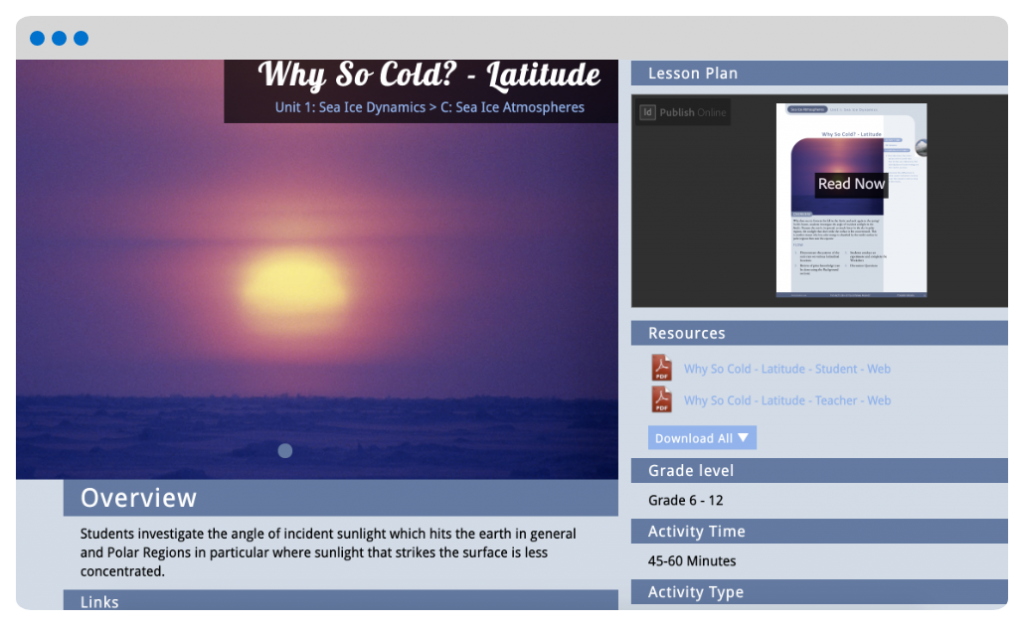In this lesson developed by the Arctic Eider Society, students investigate the angle of incident sunlight in the Arctic. Because the sun is, in general, so much lower in the sky in polar regions, the sunlight that does strike the surface is less concentrated. This is one of the reasons why less solar energy is absorbed by the earth’s surface in polar regions than near the equator.
1. Angle of Incidence
First, students learn about the angle of incidence, which is the angle at which the sun strikes the earth’s surface. In the Arctic, the height of the sun and the curvature of the earth influence the angle of incidence and therefore the amount of energy absorbed.

2. Demonstration
In order to visualize this phenomenon, a beam of light is projected on a ball. Students can observe the shape and size of the bright spot on the ball depending on the angle at which the beam hits the object. A series of reflection questions follow this demonstration.

3. Practice
Students get to develop their understanding of these concepts through practice. In a similar setting to the one demonstrated, they observe and measure the angle and concentration of incident sunlight in different regions of the earth.

Resources
- Study solves two mysteries about wobbling Earth
- PhysicalGeography.net
- Windows to the Universe
- Climate Science Investigations

